Section 1 - The Ageing Process / 1.2 Article: Variation in Ageing
VARIATION IN AGEING
Chronological and Biological Ageing

Why is it that one seventy-year-old person appears healthy and independent, whilst another can appear frail and dependent on others? This question captures the difference between chronological and biological ageing.
A person’s chronological age is simply a count of the number of years, months or days since their birth. In contrast, their biological age, to put it simply, the age they appear.
There is a wide variation in the separation between a persons chronological and biological age across a population. This causes variation in the range of function between individuals of the same age (fig. 3).

Fig 3. Functional capacity curves demonstrating the effect of biological ageing. Reproduced from Kalache, A. & Kickbusch, I. (1997), World Health, 50 (4), 4 - 5, WHO.
Biological ageing is difficult to predict and classify as it is the result of several factors including, chronological age, genetics, socio-demographic factors like poverty, lifestyle, nutrition and disease.
It is this difference between these descriptions of ageing that makes defining ‘an older person’ very difficult. As a result, most gerontologists simply use people’s chronological age as a ‘catch-all’.